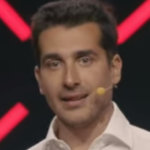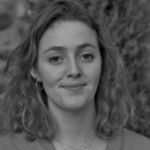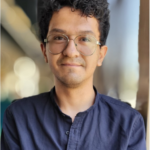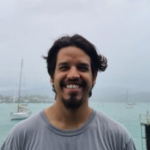Principal Investigator
Ioannis Stefanou
Ioannis Stefanou is Professor at ENSTA, member of the Institut Polytechnique de Paris, and researcher at the Institute of Mechanical Sciences and Industrial Applications (IMSIA). He has studied civil engineering, mechanics and applied mathematics at the National Technical University of Athens, and did his PhD at the Laboratory of Geomaterials of the same institution.
His main research interests are (geo-)mechanics, dynamics, earthquake control, induced seismicity, control theory, homogenization, machine learning and artificial intelligence.
He is the PI of the ERC-StG 2017 project Controlling earthQuakes – CoQuake, of the Connect Talent 2019 project Controlling Extreme EVents – CEEV, awarded by the Pays de la Loire, and of the ERC-CdG 2023 project Preventing human-induced seismicity to fight climate change – INJECT.

Associated Scientists
Jean-Francois Semblat
Jean-François Semblat is Professor at ENSTA, member of the Institut Polytechnique de Paris, and researcher at the Institute of Mechanical Sciences and Industrial Applications (IMSIA). He is also president of the Department of Mechanics and Energetics at the Institut Polytechnique de Paris. His field of research spans from seismic wave propagation in complex geological structures, to dynamic soil-structure interaction, soil dynamics (including liquefaction) as well as structural dynamics. He mainly focuses on numerical approaches such as FEM & BEM. He has contributed to various research projets: on earthquake control (CoQuake), on seismic safety of nuclear facilities (Sinaps@), on liquefaction (ANR ISOLATE), on surface wave effects on long-period structures (ANR MODULATE). He is a scientific committee member of AFPS and CFMS, a member of the TC203 committee of the ISSMGE on Earthquake Geotechnical Eng., and on the editorial board of the International Journal of Geomechanics. He is also Associate Editor of Soil Dynamics and Earthquake Engineering.

Post-Doctoral collaborators
Auregan Boyet
I acquired my Engineering degree in Geosciences and Environment at the Institut Polytechnique Unilasalle in 2020. I joined the GEoREST ERC-project as a PhD student to study post-injection seismicity induced by fluid injection/extraction related to geothermal energy and obtained my PhD with honors “Cum Laude” in 2024 within the Civil Engineering program at the Polytechnic University of Catalonia (UPC). I worked as a postdoctoral research for the CO2sink project at the IMEDEA-CSIC institute on the potential of induced seismicity in the case of CO2 storage into deep volcanic areas. I am currently a postdoctoral researcher at ENSTA, IP Paris, for the INJECT ERC-project, continuing to work on induced seismicity in geo-energy applications, but now focusing on its prevention and control.

Diego Gutiérrez-Oribio
Diego Gutiérrez-Oribio was born in Mexico and received his Bachelor’s and M.S. degrees in Mechatronic Engineering from the National Autonomous University of Mexico (UNAM), Mexico City, in 2013 and 2016, respectively. He obtained his Ph.D. in Electrical Engineering – Automatic Control (with honors) from UNAM in 2021. From 2021 to 2024, he was a postdoctoral researcher at the École Centrale de Nantes, where he worked on earthquake control as part of the ERC project CoQuake. He is currently a postdoctoral researcher at ENSTA, IP Paris, contributing to the ERC project INJECT, which focuses on preventing induced seismicity in renewable energy generation. His research interests include the control of mechanical systems, nonlinear dynamics, robust control, passivity, and machine learning.

David Riley
David received both his bachelor’s and master’s degrees from San Diego State University in 2016 and 2019, respectively. In 2023, he earned his PhD in Engineering and IT from the University of Sydney, where he focused on compaction dynamics of brittle porous media using a combination of theoretical, computational, and experimental methods. Currently, David is a postdoctoral researcher at ENSTA, IP Paris, where he works on developing computational tools in nonsmooth mechanics, reduced order modeling, and machine learning. His research targets efficient simulations of induced seismicity and its prevention, with a focus on the computational implementation of control theory.

